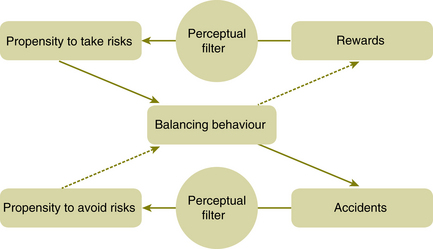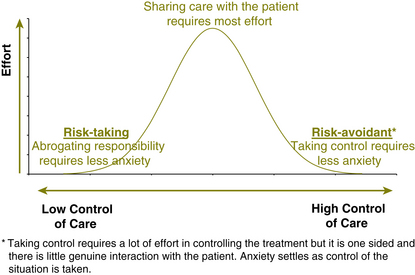Chapter 6 Personal (clinician) responses to risk
Within health care, clinicians are exposed to risks every day. Patients are exposed to risk, clinicians take risks and they sometimes put themselves at risk. Occasionally (perhaps often) clinicians feel that they carry all the risk or they find themselves saying, ‘We can’t take the risk’. Murphy (2002) comments, ‘Apart from the need to assess and manage risk, it also has an emotional component for all concerned and often a judgmental aspect.’1 Undrill (2007) says, ‘Risk assessment has become a large and anxiety provoking part of the work of many psychiatrists.’2
The risk thermostat3
The risk thermostat is a conceptual, qualitative model of how behaviour in risky situations is influenced by perceptions and attitudes. Cultural theory explains risk-taking behaviour by the operation of filters. It postulates that behaviour is governed by the probable costs and benefits of alternative courses of action which are perceived through filters formed from all the previous incidents and associations in the risk-taker’s life. This is shown diagrammatically in Figure 6.1.
Exercise 1
Below is a continuum which can be useful to consider when faced with a risk problem. The continuum characterises the alternative courses of action which will have been considered when risk decisions were taken previously. It allows for a consideration of where your risk thermostat is set at any given time and how the setting may change in different circumstances.
This is shown diagrammatically in Figure 6.3
In practice, it is more common to veer towards the risk-avoidant end of the continuum as this is driven not just by anxiety, but also high workload and limited knowledge base. Clinicians at the risk-taking end of the continuum are more likely to be working in situations where higher levels of risk are dealt with on a daily basis and they become desensitised to the level of risk; for example, crisis teams and inpatient units.









